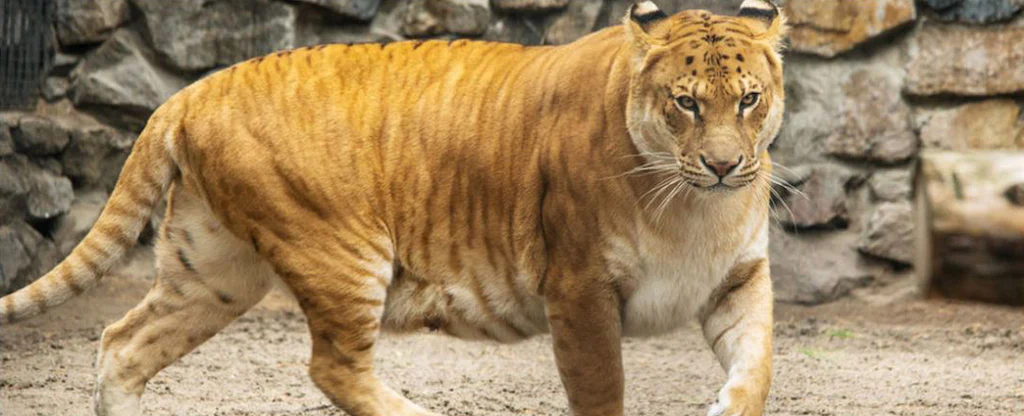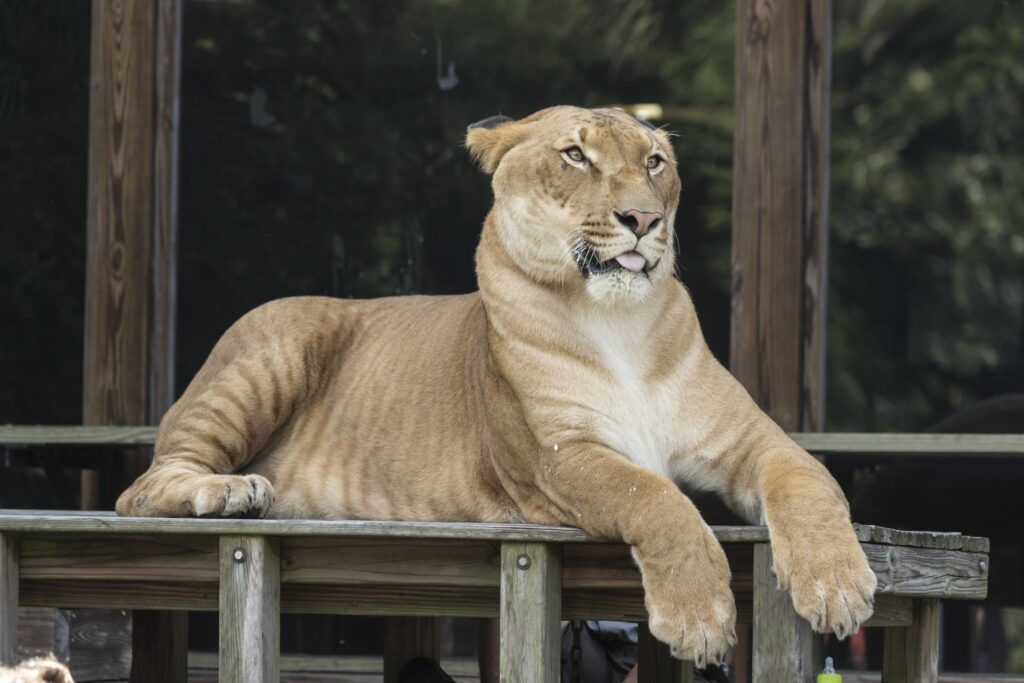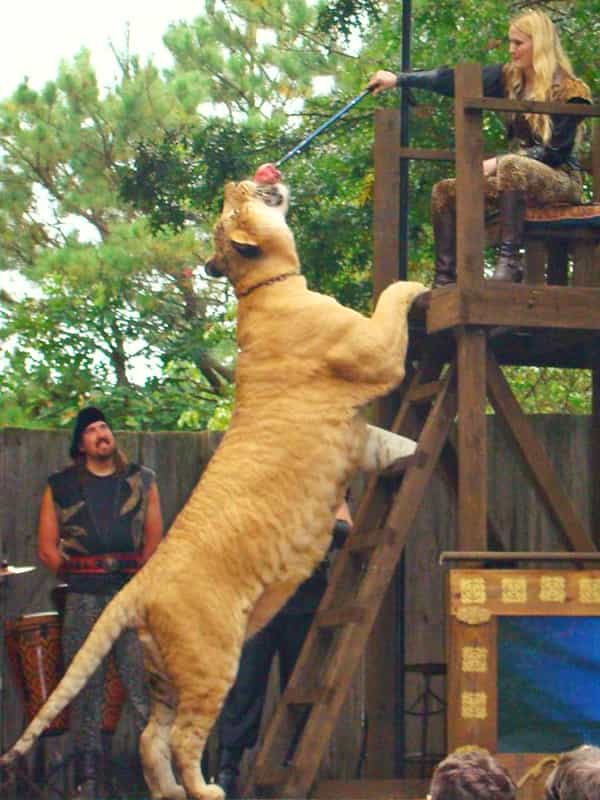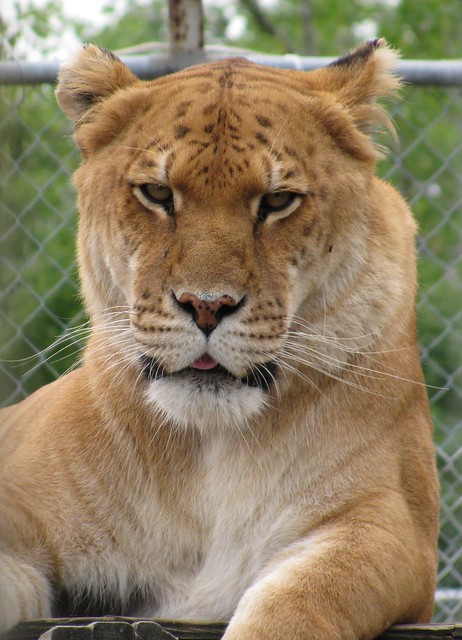Liger: Nature’s Remarkable Hybrid
A liger is a hybrid crossbreed between a male lion (Panthera leo) and a female tiger (Panthera tigris). The term “liger” is a portmanteau of “lion” and “tiger.” Ligers are not found in the wild as lions and tigers inhabit different regions and continents, but they can occur in captivity when the two species are kept together.
Ligers often display characteristics of both parent species, such as a lion’s mane and a tiger’s stripes. They are known for their large size, as they tend to be larger than either parent species. However, ligers are controversial because they don’t occur naturally and are the result of human intervention in the breeding of captive big cats. The breeding of ligers is typically discouraged by wildlife conservation organizations due to concerns about the ethics of creating hybrids and the welfare of the animals involved.

Taxonomy of the liger:
Kingdom: Animalia
Phylum: Chordata
Subphylum: Vertebrata
Class: Mammalia
Order: Carnivora
Family: Felidae
Genus: Panthera
Species: Panthera leo × Panthera tigris – The liger is a hybrid resulting from the interbreeding of a lion (Panthera leo) and a tiger (Panthera tigris).

Origins and Genetics:
The term “liger” is a blend of “lion” and “tiger.” The crossbreeding of these two distinct big cat species is a rare occurrence and is not found in the wild. In captivity, where lions and tigers may coexist, the conditions for such hybridization can occur. The genetics of ligers showcase a mix of traits from both parent species, including a lion’s mane and a tiger’s stripes.

Physical Characteristics:
Size:
Ligers are renowned for their remarkable size, often surpassing both parent species. They are considered the largest big cat hybrids. The gigantism exhibited by ligers is a result of a genetic phenomenon called hybrid vigor or heterosis, where the combination of genes from different species can lead to an enhanced growth rate and size.
Weight:
Ligers can be significantly heavier than both lions and tigers. Adult male ligers have been reported to weigh between 900 and 1,000 pounds or more, while females typically weigh between 500 and 700 pounds. These weights can vary based on factors such as genetics, diet, and living conditions.
Health Considerations:
The extreme size of ligers can pose health challenges. Some ligers may experience physical issues such as joint problems or other conditions related to their large size. Caretakers and conservationists need to be vigilant in monitoring the health and well-being of ligers in captivity.
Growth Rate:
One of the notable aspects of ligers is their rapid growth rate. They tend to grow much faster than their parents during their early years. This accelerated growth is a consequence of hybrid vigor and can result in substantial size differences between ligers and their parent species.

Habitat and Range:
Unlike lions and tigers, ligers do not have a natural habitat. They are a product of human intervention and exist in captivity. Lions are native to parts of Africa, while tigers are found in various habitats across Asia. Ligers, being hybrids, are not found in the wild and are limited to environments where lions and tigers are bred and kept together.

Diet and Feeding Habits:
Ligers, like their parent species, are carnivores. Their diet typically includes a variety of meats, with a preference for larger prey such as ungulates. In captivity, caretakers provide a carefully balanced diet to meet their nutritional needs. Feeding habits align with those of lions and tigers, reflecting the natural instincts of big cats.
Controversies and Conservation:
The breeding of ligers has stirred controversies within the conservation community. Critics argue that intentional hybridization raises ethical concerns and may impact the health and well-being of the animals involved. Conservation organizations generally discourage the intentional breeding of ligers, emphasizing the importance of preserving the genetic integrity of individual species.
Challenges in Captivity:
Ligers face specific challenges in captivity due to their hybrid nature. Their size, dietary requirements, and social interactions require careful management. Responsible breeding practices and proper care are essential to address the unique needs of ligers and ensure their well-being in captivity.
First Liger record:
The first recorded instances of ligers can be traced back to the early 19th century. It is believed that the first ligers were bred in captivity, primarily in zoos or menageries where lions and tigers were housed together. The first known breeding of a lion and a tigress in captivity likely occurred sometime during the late 1700s. Roughly 100 ligers and fewer than 100 tigons are thought to exist. historical records suggest that these hybrids were likely the result of accidental or unplanned breeding.
One notable early mention of a liger is from the 19th century in India. The Nawab of Junagadh, a region in present-day Gujarat, reportedly had ligers in his menagerie. Additionally, there are historical accounts of ligers in zoos in the United States and Europe during the late 19th and early 20th centuries.
It’s important to note that ligers do not occur naturally in the wild.
